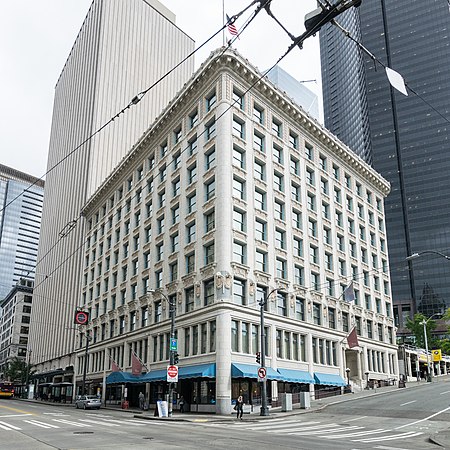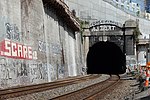Arctic Building

The Arctic Club Building is a nine-story hotel in Seattle, Washington located at the Northeast corner of Third Avenue and Cherry Street. Built in 1916 for the Arctic Club, a social group established by wealthy individuals who experienced Alaska's gold rush (Klondike Gold Rush), it was occupied by them from construction until the club's dissolution in 1971. It is entirely faced with cream white terra cotta with submarine blue and orange-brown accents. It has terra cotta walrus-heads lining the third floor of the building and was also adorned with a polar bear. It is one of the finest examples of multi-colored matte glaze terra cotta work in the city. Recently restored, the building has been adapted for use as a luxury hotel, Arctic Club Seattle (a DoubleTree by Hilton). A roof garden used by the social club was replaced with a penthouse office suite.It was designed by architect A. Warren Gould. In 1978 it was listed on the National Register of Historic Places.
Excerpt from the Wikipedia article Arctic Building (License: CC BY-SA 3.0, Authors, Images).Arctic Building
3rd Avenue, Seattle International District/Chinatown
Geographical coordinates (GPS) Address External links Nearby Places Show on map
Geographical coordinates (GPS)
| Latitude | Longitude |
|---|---|
| N 47.603716842778 ° | E -122.33194483472 ° |
Address
Arctic Building
3rd Avenue 700
98104 Seattle, International District/Chinatown
Washington, United States
Open on Google Maps










